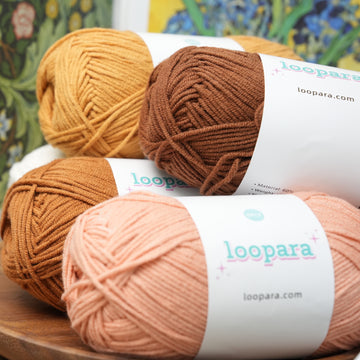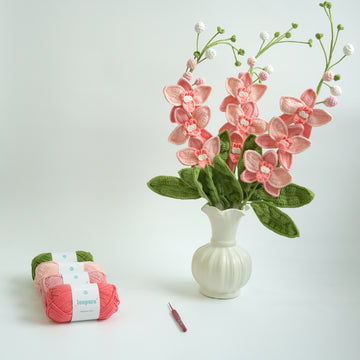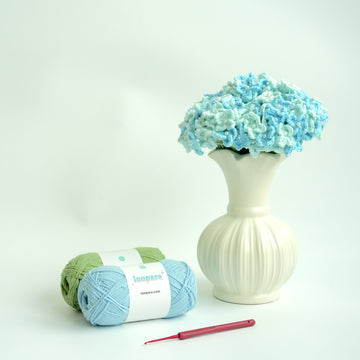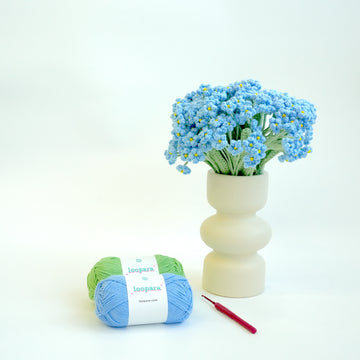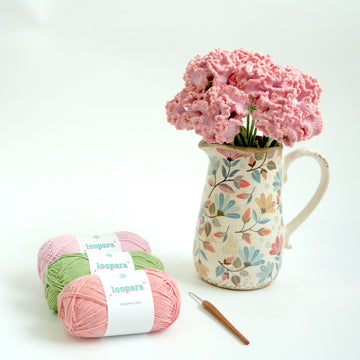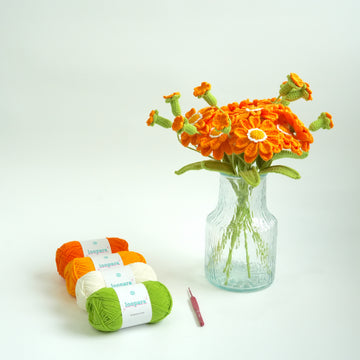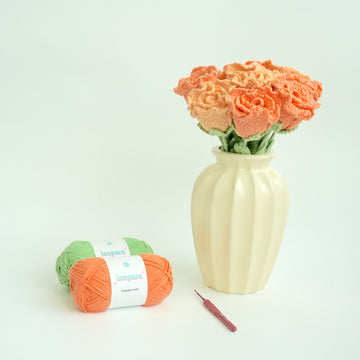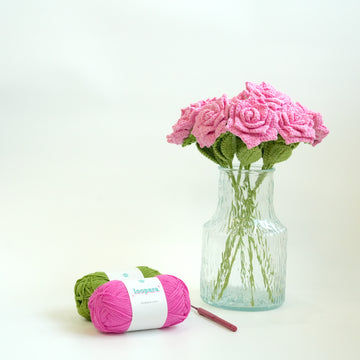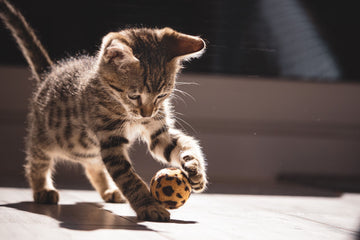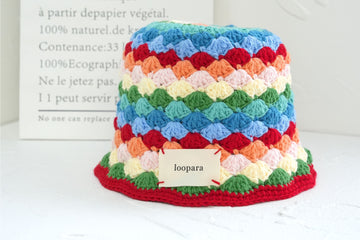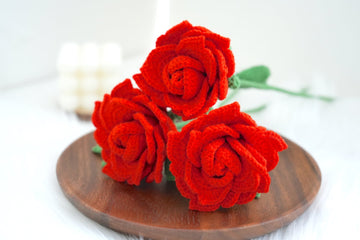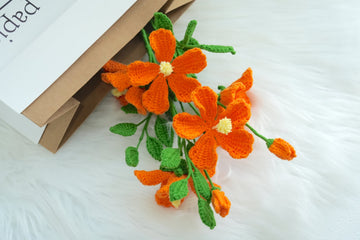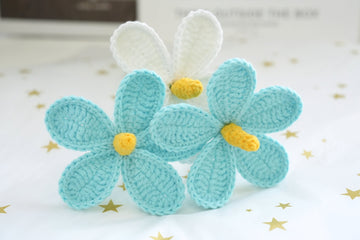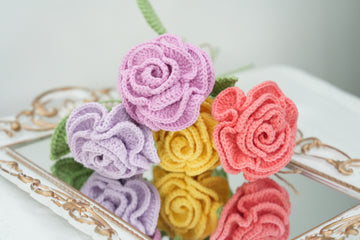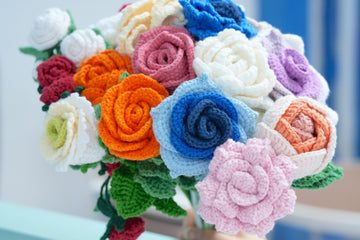Today, crochet is more popular than ever, with avid crocheters sharing questions, tips and patterns online. It’s a craft that blends modern and traditional style – but just how far does the history of crochet go back?
The answer might surprise you.
We’re going to trace the origins of crochet back through Britain to continental Europe, and even to China. And we’ll look at the different influences that have shaped the crochet we know and love today.
The first documentary evidence of crochet
Pinning down the earliest evidence of crochet isn’t as easy as you might think.
Knitted fabrics are known to have been around from as early as the 11th century. But crochet – the distinctive art of stitching fabric using a single hook – is more obscure.
The first known reference to the term comes in the middle of the sixteenth century. A French tailor by the name of Jean de Compiègne was employed by Mary, Queen of Scots to make her clothes.
But Jean also provided the Queen with various yarns and textiles, all dutifully recorded in her wardrobe account. Amongst these was silk thread for “croude et crochetz” – sewing and crochet.
Mary, Queen of Scots’ contemporary south of the border, Elizabeth I, also seems to have had crochet in her wardrobe. Her wardrobe accounts include references to chain stitch as early as 1558. And other lists of her clothing refer to trims made of “cheyne lace”.
What’s less clear is exactly how Mary produced her crochet, or how close Elizabeth’s “cheyne lace” was to the chain stitch we use today. Unfortunately, there’s no way of knowing for sure.
The first crochet instructions

To know that historical “crochet” has the same meaning as today, we’d need some instructions on how to make it. The first of those appear in the nineteenth century. And despite crochet often being thought of as British, they were published in the Netherlands.
In 1823, an edition of a Dutch magazine called Penélopé published detailed instructions for making different styles of crochet purse. They were accompanied by a color plate showing the finished articles.
The patterns use a number of different stitches. One purse was made using a mesh of chain stitches, another by alternating chain and slip stitches, and a third with double crochet stitches.
All this sounds a lot like modern crochet, except for one key difference – the tool for making it.
The instructions talk about using a tambour needle – a needle used in a type of French embroidery – rather than a hook. Ten years later, another article in Penélopé recommended using what it called a “shepherd’s hook” for crocheting with coarser yarns.
Influences on the development of crochet
It’s likely that crochet as we know it today evolved from a number of different influences. Let’s take a look at what we know about those.
Tambour embroidery
As evidenced by the Penélopé article, in the early nineteenth century in the Netherlands, crochet stitches were being produced with a tambour needle.
Tambour is a form of French embroidery, used particularly to create intricate beadwork on fabric. The tambour needle isn’t quite the same as a crochet hook. It’s a long, strong needle with a finer, sharper hook at the end, and a handle to grip it.
Just as with crochet, the origins of tambour are shrouded in mystery. It’s thought to have originated somewhere in Asia. Different accounts place its birth in China, India or Persia.
Even the reason for the name is disputed. “Tambour” is French for drum, and some people say the name reflects the rhythmic up-and-down movement of the needle. Others believe it comes from the circular frame on which the embroidery was originally made.
Tambour pieces were being imported into Europe as early as the sixteenth century. They became increasingly popular in the eighteenth and nineteenth centuries.
Using a tambour needle to produce crochet stitches may have been a Dutch innovation. Or perhaps the technique was more widespread, and the Penélopé article just happens to be our first documentary evidence of it.
Today, tambour needles are still used to make tambour embroidery. But their association with crochet seems to be at an end.
Shepherd’s knitting
Another precursor to modern crochet appears to have originated in the highlands of Scotland. A lady of the manor named Elizabeth Smith kept a diary, The Memoirs of a Highland Lady, in which she referred to “shepherd’s knitting”.
The journal entry was dated 1812, but was revised some time in the 1840s and not published until 1898. It describes a practice by Scottish peasants of looping yarn with a hook to make cloth.
Remember that article in Penélopé in 1833, talking about a “shepherd’s hook”? This seems to be referring to the same thing.
In the 1840s, more and more books about crochet began to be published. One of those was Miss Lambert’s Handbook of Needle-work, published in New York in 1842. This said that crochet hooks were sometimes referred to as shepherd’s hooks.
Miss Lambert also described what the hooks looked like, noting that the hook at the end was similar to a fishhook. She said they were available in different sizes, and could be made from ivory, boxwood or steel.
In a follow-up work published two years, Miss Lambert defines crochet as “a species of knitting originally practised by the peasants in Scotland”.
She goes on to state that the craft had been perfected in England. And she notes categorically that, despite the French name, French (and German) claims to its invention were false.
Passementerie
Despite Mrs Lambert’s firm opinion on the matter, French tambour embroidery wasn’t the only Gallic craft with a link to crochet.
Passementerie is a way of producing trimmings of different kinds. And back in the seventeenth century, one form of passementerie involved making “chains in the air”. What’s more, those chains were created using a hook.
In 1653, the French king Louis XIV issued a patent to the craftspeople involved. This described embroidery thread “enhanced and embellished” by a range of different techniques – including “on a crochet.”
Exactly what this crochet looked like at that point in time is unknown. But almost seventy years later, a French dictionary provided a description. A crochet, it says, was a small instrument about three inches long, made of iron, with a wooden handle and a curved, pointed end.
Forty years later, In 1763, a French encyclopedia included an illustration of a tambour needle. It showed a needle it would be difficult to tell apart from the in-line crochet needle used today.
Crochet in Ireland
Crochet played an important part in Ireland in the middle of the nineteenth century.
During the Potato Famine, a period of disease and starvation that lasted from 1845 to 1852, workers across the country lost their livelihoods. Crochet was used as part of famine relief schemes, designed to provide work and income.
Both catholic nuns and leaders of the Church of Ireland taught women to make crochet lace. And charities provided lessons free of charge to anyone who wanted them.
By 1851, some 16,000 Irish women were deriving an income from crochet. And when many of them emigrated to the US with their families, they took the craft with them.
The earliest forms of Irish crochet were made using very fine linen thread and a steel hook. The simple equipment meant that it was a craft that was open to the poorest people. But the result, Irish crochet lace, was worn by some of the richest men and women in the world.
Crochet in the 19th and 20th centuries
The Victorian period in Britain saw crochet produced in strong colors. But as the twentieth century dawned, the trend moved towards paler and more delicate shades.
Crochet declined in popularity after the First World War. But times change, and after the Second World War, it experienced a resurgence. A passion for crafting, especially in the USA, saw more and more crochet patterns being published.
These expanded traditional crochet designs into the world of home décor, with patterns for items like pot-holders and doilies. And the new patterns saw a return to brighter colors, as well as the use of thicker yarns.
Later decades saw crochet decline in popularity again, gaining a home-spun and old-fashioned image. But that was not to last…
Crochet today
Today, crochet is as popular as it’s ever been. According to the Association of Creative Industries, almost 29 million Americans either crocheted or knitted in 2011. And they spent $2.8 billion on their crafts.
Sales of crocheted and knitted goods are buoyant too. In the UK in 2022, consumers spent almost £107 million on knitted and crocheted fabrics.
A potted history of crochet
It’s hard to be precise about exactly where and when crochet originated. The Scottish peasants who knitted their fabrics with a “shepherd’s hook” have a strong case. But so do the French, with their tambour needle, and the Dutch, who used it to make crochet stitches.
As with so many crafts, it’s likely that the crochet we know today is the result of different influences at different times.
But whatever its origins, it’s good to see that it’s as popular today as it’s ever been.


